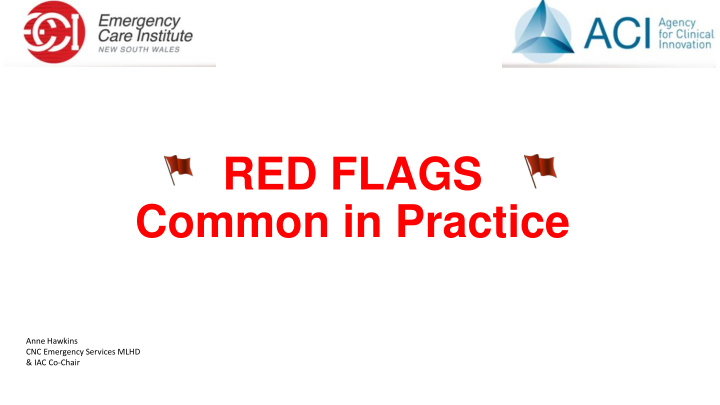



RED FLAGS Common in Practice Anne Hawkins CNC Emergency Services MLHD & IAC Co-Chair
Red Flags We only know what we know
How many ED patients fit the classic mould?
What is our answer • We try and make them fit – “Pattern Matching” • WE use “rule bases thinking” • We have a pre-determined diagnosis in mind or pre- conceived ideas
How do we avoid the pitfalls? • Firstly recognise them – Be aware • Atypical presentations or those not responding to treatment as expected • Reassess, think again, start over with a different set of eyes no pre- conceived • Representations for the same complaint • Is a patient at risk and requires re-assessment • Be aware of red flag indicators • Is there a potential for the simple to be more complex • What serious diagnosis can mimic less sinister conditions
Can we learn from this ? The Clinical Excellence report in 2010 commented that the most frequent issue in RCA reports continues to be management of patients whose condition has deteriorated How do we identify this in our busy challenging departments and prevent repetition?
How do we challenge ourselves? The challenge of the puzzle is to connect all nine dots by drawing four straight, continuous lines through each of the nine dots without lifting the pencil from the paper
If you always do what you always did, you will always get what you always got . – Albert Einstein
“More is Missed by not Looking than not Knowing”
Great Red Flag Modules – Shared Lessons • Go to the ECI Website • www.ecinsw.com.au • 8 great case presentations • Under clinical that bring red flags to life • Click on “Improving Quality and Safety” • Once read never forgotten • At the bottom of the page see the 8 great lessons learnt (Developed and presented by Dr Davina Julliard )
Recommend
More recommend